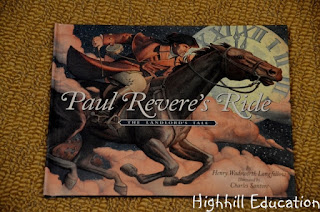Benjamin Franklin was the Leonardo Da Vinci of America. He was an inventor and great thinker. His ideas not only defined our country, but helped it to gain independence. He was the Father of America and the first American Ambassador to both England and France.
As a citizen he worked to start a fire department, improved the post office, began a hospital and a library. He was the inventor of the lightning rod and conducted many scientific experiments involving electricity. He was a writer and printer and an involved member of society. He was loved by all and a great example to us even today.
Because he was so great a man there are numerous biographies written for children telling the story of his life. Some are excellent, and others mediocre. Here are three wonderful books that engage children while introducing them to Benjamin Franklin. Any one of the three is a great place to start and they all give very similar information. The book Ben and Me is a bit different than the other two because it is longer and the story is told by a mouse named Amos living with Benjamin Franklin.
What's the Big Idea Ben Franklin? by Jean Fritz
Ben and Me by Robert Lawson
Benjamin Franklin by Ingri and Edgar D'Aulaire
After reading about Ben Franklin, my daughter wrote a paper on Ben Franklin. First she made a list of interesting things she learned about Benjamin Franklin. Next she grouped the interesting facts into related groups. Then she chose three groups to make into paragraphs. After she had completed three paragraphs she wrote an introduction making sure to begin with a sentence which got the attention of the reader. She finished her paper with a conclusion paragraph. After the rough draft was complete, we spent a day crossing out irrelevant sentences and expanding on sentences which used vague descriptive words such as good and neat. Finally, everything was recopied to a clean sheet of paper. The entire process lasted about two weeks and ended with a product she was proud to have completed and happy to be done with.
For more American History lessons for kids please visit Highhill Education again next week or visit our archives on our History Page.
Check out these great blog hops for more educational activity ideas.

































